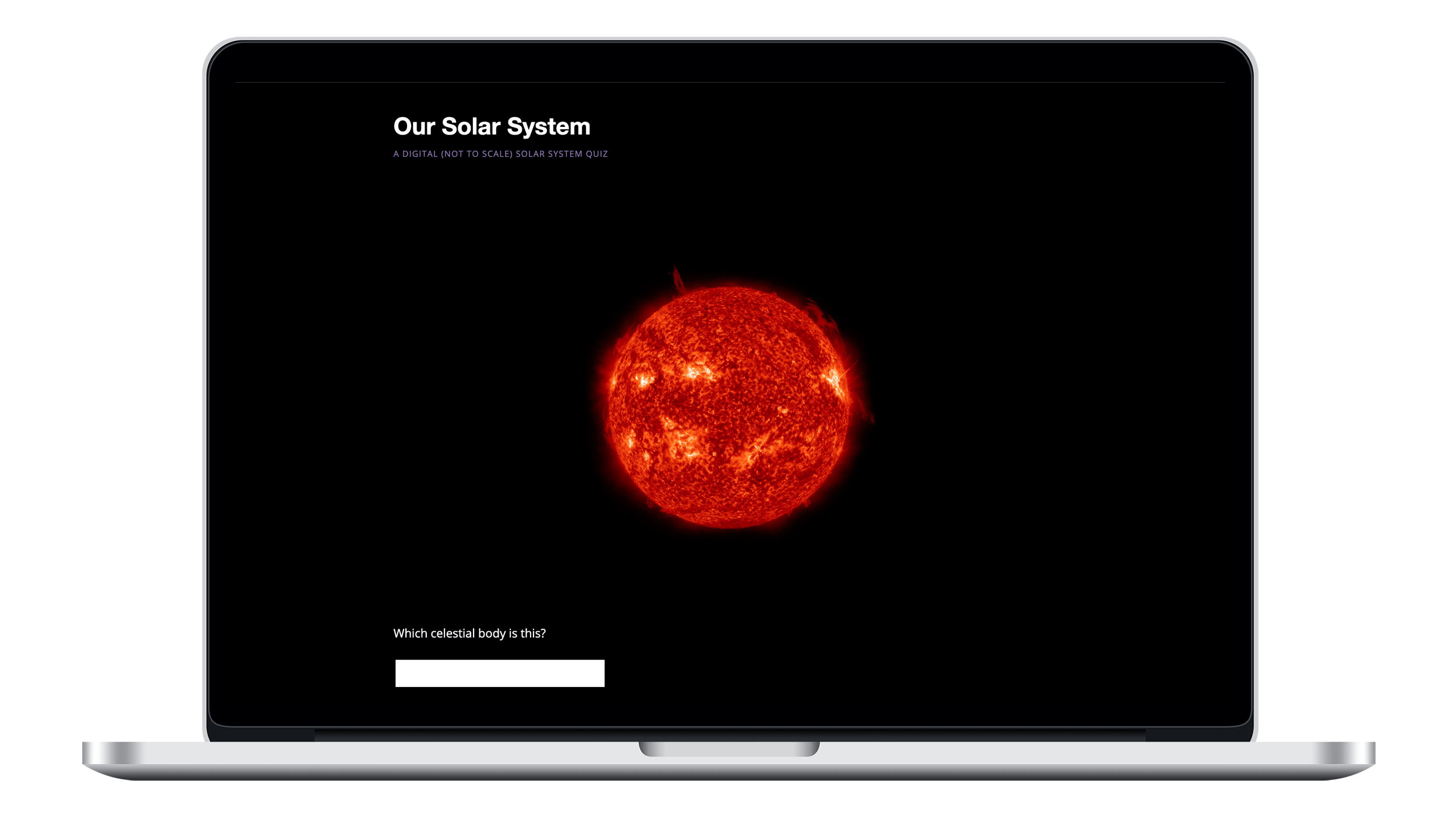Developing a custom quiz
We developed eight learning objectives for our unit on astronomy, with the first focusing on building germane cognitive load to assist learners in achieving later learning objectives. It also served as an opportunity for instructors to conduct a knowledge check with students to help inform any adjustments that may be needed in future activities.
As a final activity to support this learning objective, I developed a digital quiz that replicates the distance between different celestial bodies to help learners understand scale. The quiz was built using Word Press with customized CSS styling.
